The southern Russian city of Stalingrad, later renamed Volgograd, witnessed one of the bloodiest battles in the history of warfare. The heavy losses incurred by the German army broke the initiative they had in the East, making the Battle of Stalingrad arguably the most strategically decisive battle of World War II, and a decisive turning point in the war. Particularly merciless was the fighting on and around Mamayev Kurgan, a prominent hill above the city.
When forces of the German Sixth Army launched their attack against the city center of Stalingrad on 13 September 1942, a fierce battle for control took place over Mamayev Kurgan between the German attackers and the defending soldiers of the Soviet 62nd Army. To defend it, the Soviets had built strong defensive lines on the slopes of the hill, composed of trenches, barbed-wire and minefields. The Germans pushed forward against the hill, taking heavy casualties. They finally captured the hill and subsequently the railway station on 14 September 1942.
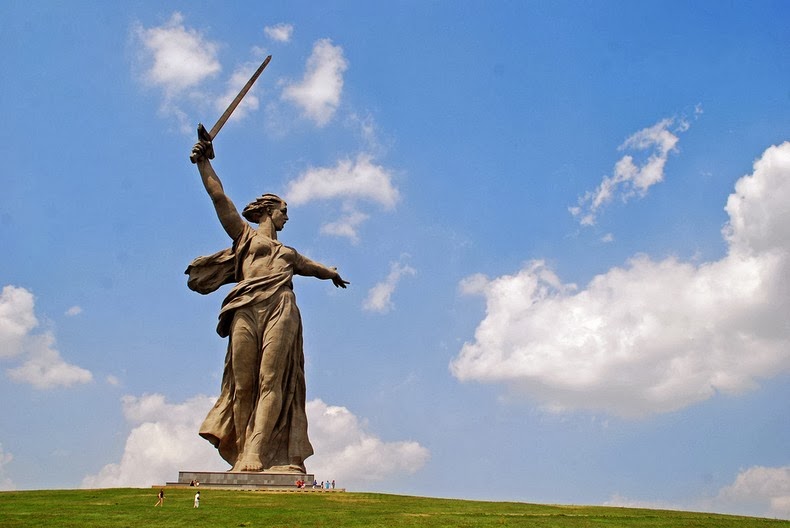
Two days later, the Soviet 13th Guards Rifle Division wrested the hill out of German hands and continued fighting for the railway station. By the end of the following day, 10,000 men of the Soviet army had perished.
The hill changed hands several times. By 27 September, the Germans again captured half of Mamayev Kurgan, while the Soviets held their own positions on the slopes of the hill. The defenders held out until 26 January 1943, when the counterattacking Soviet forces relieved them. The battle of the city ended one week later with an utter German defeat.
When the battle ended, the soil on the hill had been thoroughly churned by shellfire and mixed with metal fragments: between 500 and 1,250 splinters of metal were found per square meter. The earth on the hill had remained black in the winter, as the snow kept melting in the many fires and explosions. In the following spring the hill would still remain black, as no grass grew on its scorched soil. The hill´s formerly steep slopes had been flattened in months of intense shelling and bombardment. Even today, it is possible to find fragments of bone and metal still buried deep throughout the hill.
Twenty-four years after the battle, in October 1967, a colossal monument, “The Motherland Calls”, was erected on Mamayev Kurgan. The monument, designed by Yevgeny Vuchetich, consists of a concrete sculpture 52 meters tall, and 82 meters from the feet to the tip of a stainless steel sword, dominating the skyline of the city of Volgograd. At the time of its construction, it was the tallest sculpture in the world. The statue forms part of a War memorial complex that includes ruined walls deliberately left the way they were after the battle. The Grain Silo, as well as Pavlov's House, the apartment building whose defenders eventually held out for two months until they were relieved, can still be visited.
Mamayev Kurgan is now the communal grave of more than 35,000 civilians who died in the Battle of Stalingrad, and more than 15,000 soldiers who died defending this position. Vasily Chuikov, who led Soviet forces at Stalingrad, lies buried at Mamayev Kurgan, the first Marshal of the Soviet Union to be buried outside Moscow. Soviet sniper Vasily Zaytsev, who has 225 confirmed kills to his name, was also reburied there in 2006.
Today, more than 2 million visitors from all over the world come here to remember those who fought and lost their lives over 65 years ago.
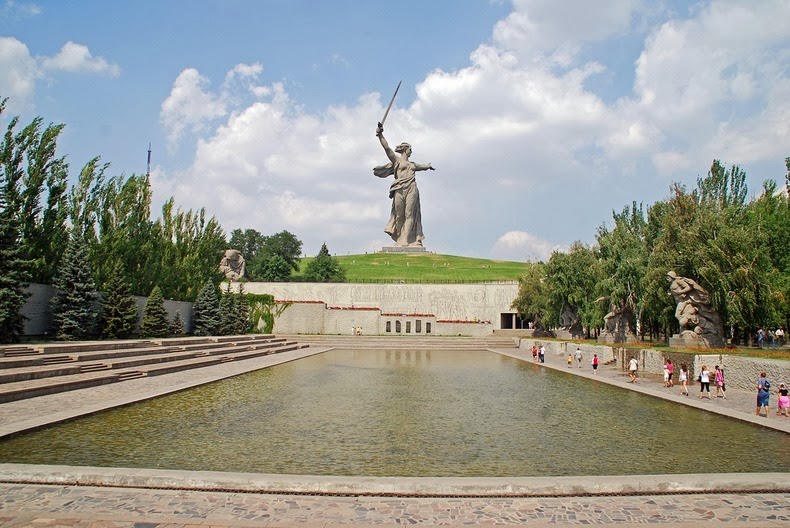
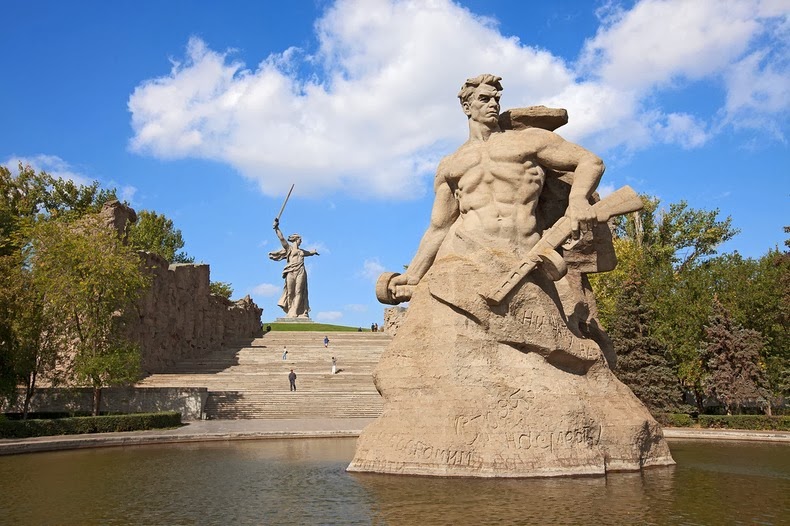
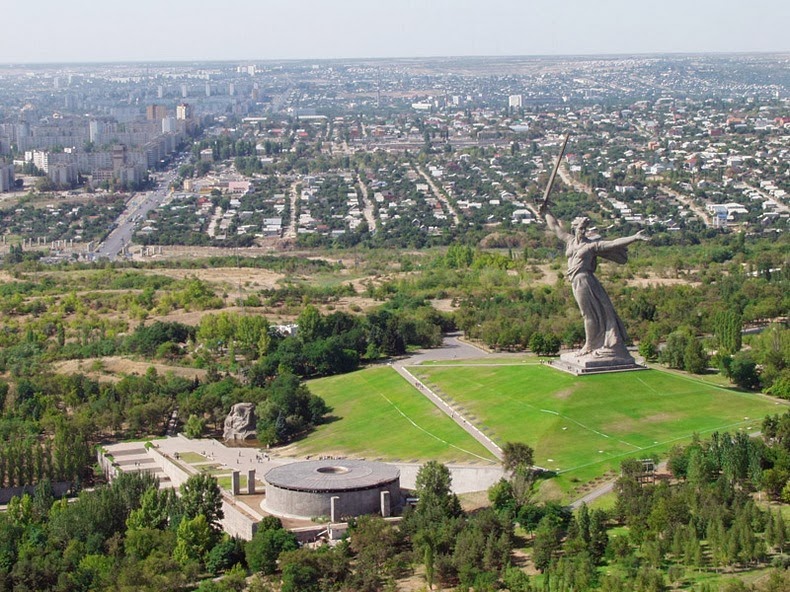

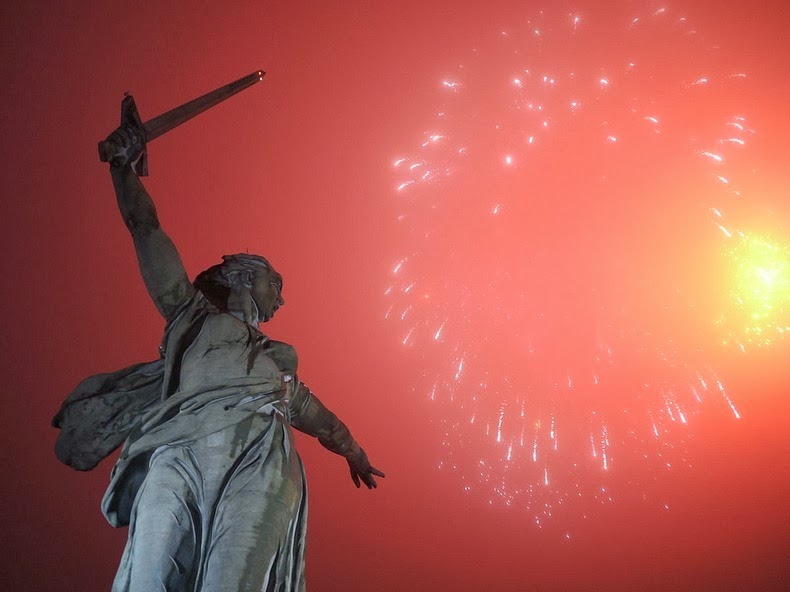

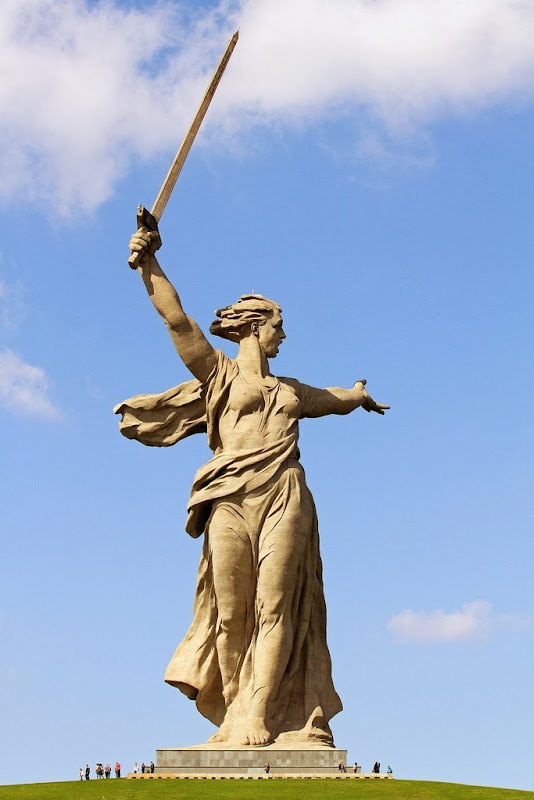

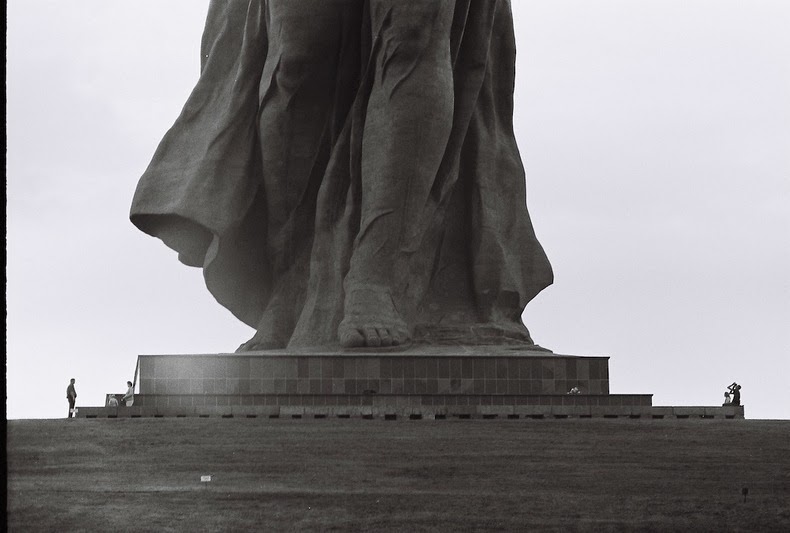
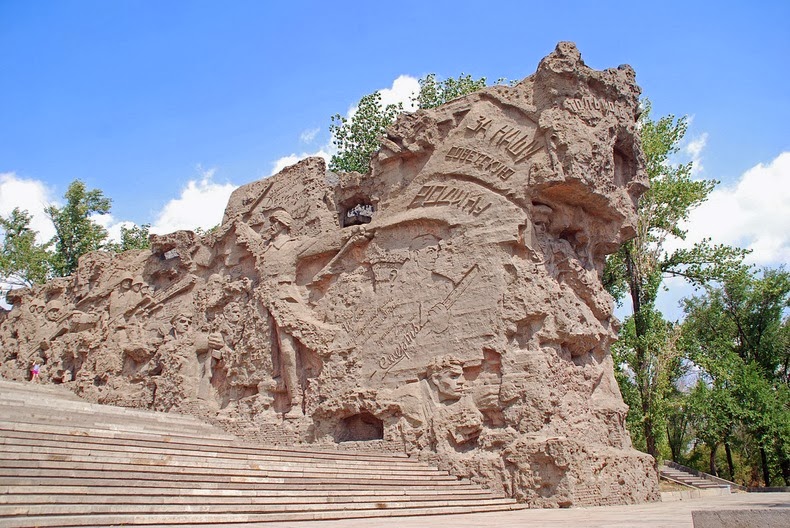
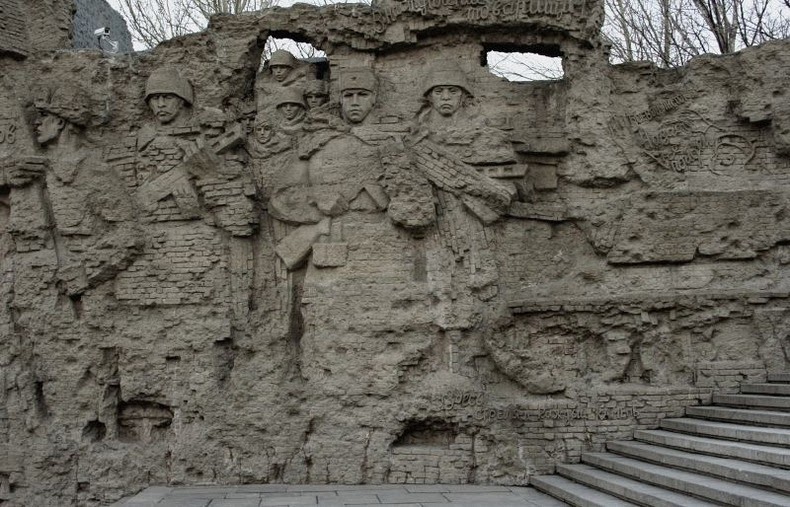



Good lord can the Russians build a war memorial or what?
ReplyDelete